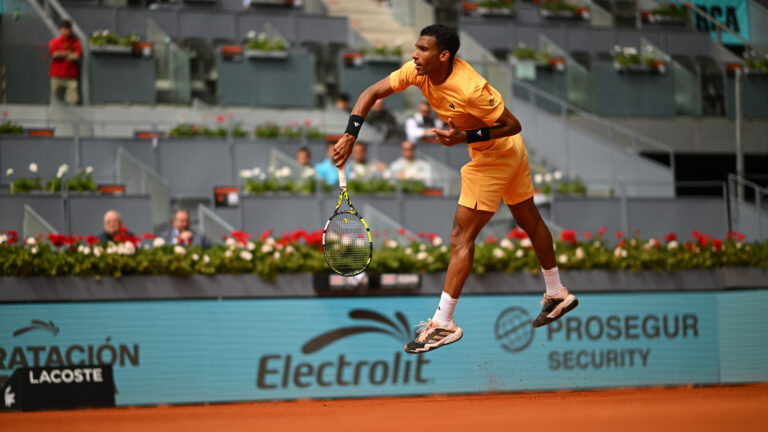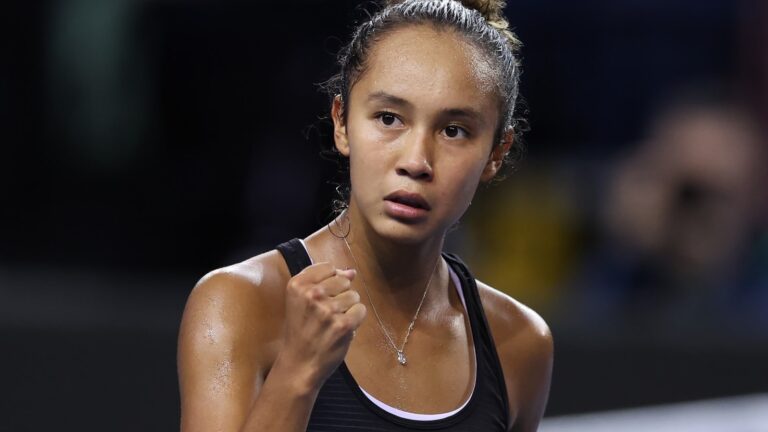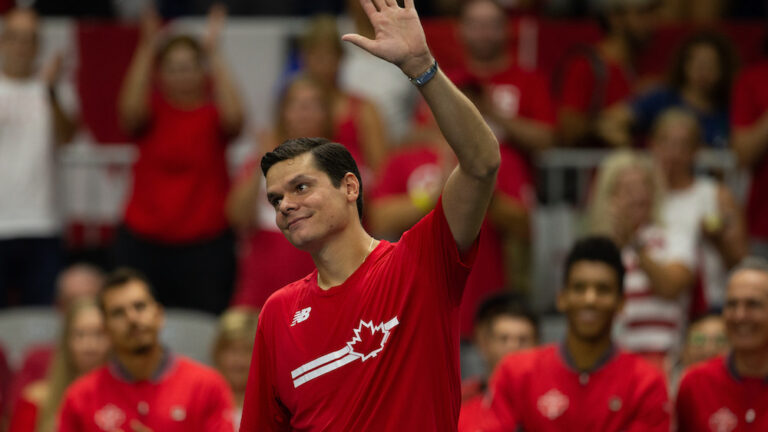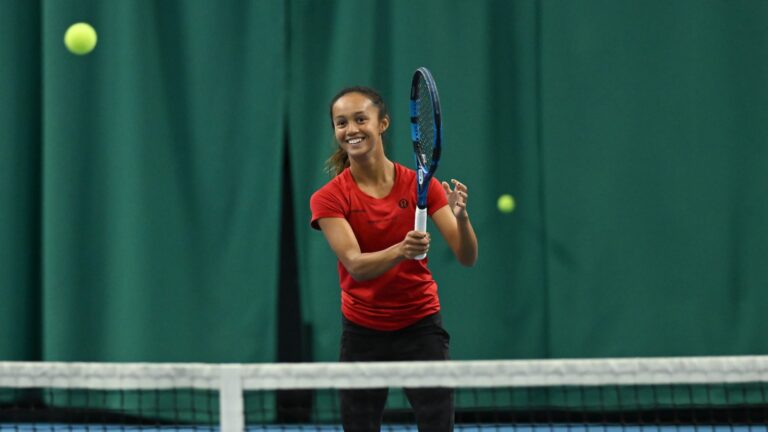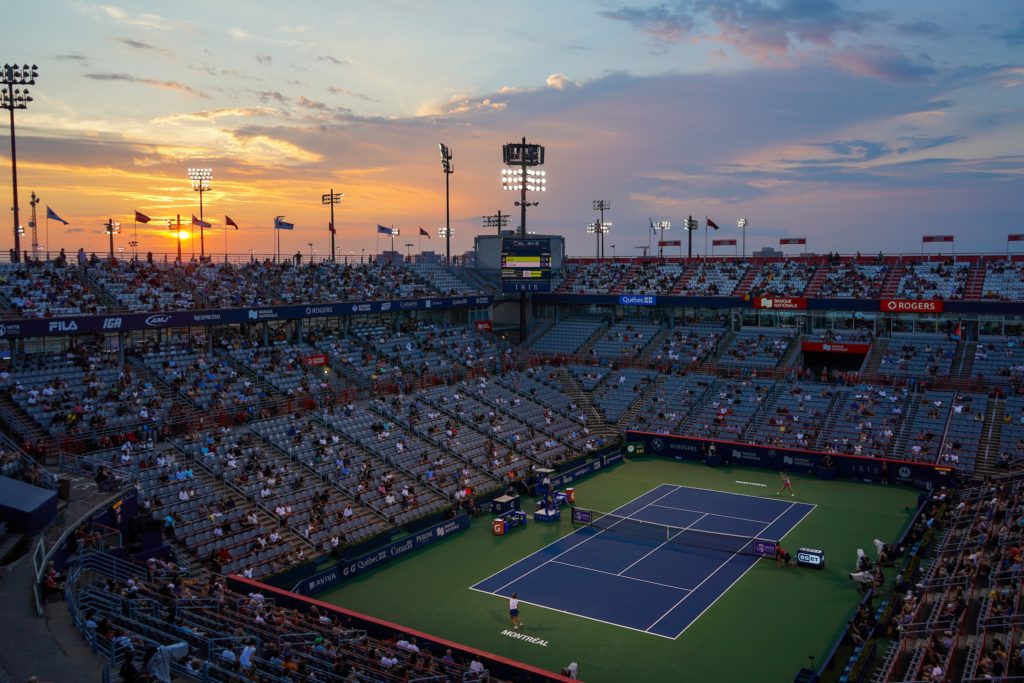
Photo : Sarah-Jäde Champagne/Tennis Canada
Thank you, volunteers!
Much was said and written about the soaring temperatures during last week’s tournament.
On my day off, I had the privilege of attending the early session on August 11 in Montréal, on an afternoon that felt like 40°C. But fans like me were better off than the players, who battled for two hours in the furnace on Centre Court. Still, it was tough for everyone.
That’s why I first want to thank the volunteers, who demonstrated the same friendliness, smile and enthusiasm as in pre-pandemic times. In addition to the heat, they had to put up with wearing a mask all day. Despite that, they assisted and directed fans AND told people who had taken off their mask to put it back on with what was certainly a smile under theirs. And even though I didn’t travel to Toronto, I have no doubt that the volunteers there were just as amiable.
To them and to all the members of the two organizations, from the bottom to the top of the pyramid, KUDOS to everyone who held up this huge event in extraordinary conditions.
And thank you!
Rebecca resurrects
As tournament director Eugène Lapierre mentioned in his wrap-up presser on Sunday: “Everyone was expecting Bianca, Leylah … Rebecca ended up with the best performance.”
It’s impossible not to be utterly charmed by Rebecca Marino, who eliminated the No.25 and No.30 early in the week.
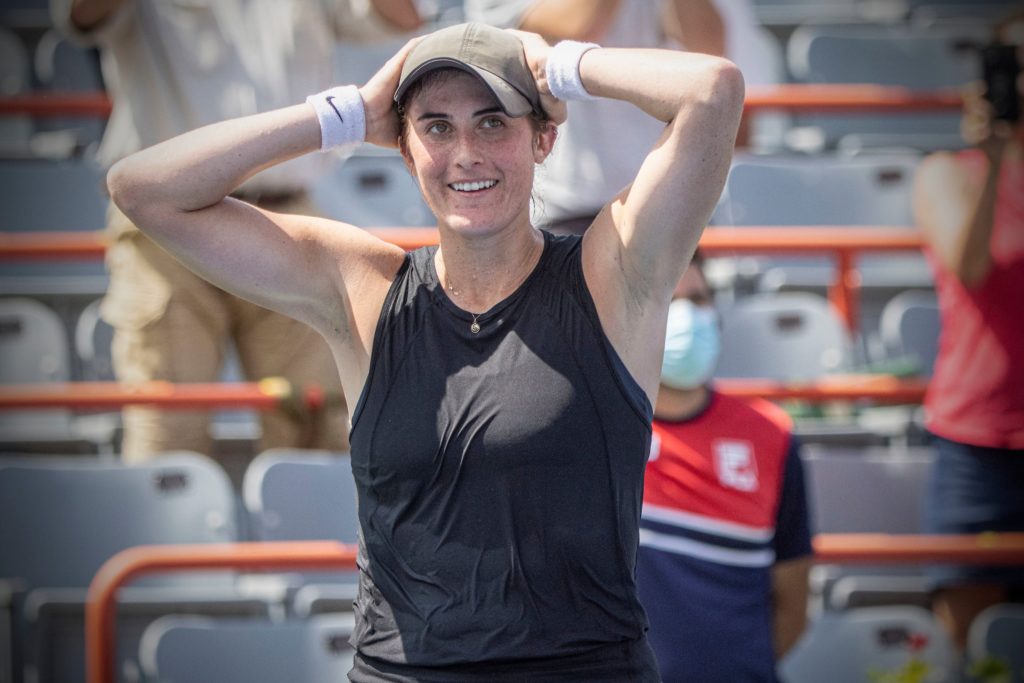
Marino has come a long way. Many of you already know her story. For those of you who don’t, here’s an article published in January that will give you a good overview.
When she defeated Madison Keys on Monday and then Paula Badosa on Wednesday, Rebecca Marino proved she could still rival players of the highest caliber and only needs a few good runs at leading events to really make her mark.
Ranked No.220 going into the National Bank Open, Rebecca shot up 43 spots to No.177. Let’s wish her the best of luck for the rest of the season.
New stars shine bright
Tennis aficionados already know this, but occasional fans who follow the Canadian Open for one or two players in particular likely made some interesting discoveries last week. Or appreciated their favorites even more.
First, they realized that Bianca Andreescu and Ashleigh Barty aren’t the only ones with an arsenal of heavy weapons. Indeed, the ace who defeated the crowd favourite on August 12 is very, very good. Galvanized by the Tunisian supporters in the stands, Ons Jabeur showed all her range and gave a quick lesson on drop shots that sent our Bianca packing. Over the past six years, slowly but surely, Jabeur has been progressing. This season is her best ever, and she has just entered the Top 20 (No.20).
The event in Toronto proved to all the doubters that towering players like John Isner (6’10”) and Reilly Opelka (6’11”) are far more than just big servers. And while their serves are like nuclear bombs, both continue to demonstrate surprising consistency in their rallies and can look to their effective resources when needed. At 36 years old, Isner is on the decline, but 23-year-old Opelka could eventually enter the Top 10.
Bublik, netminder
Doubles’ players reflexes at net are just astounding. But it was in singles that a shot so spectacular it must first be attributed to luck—and then to excellent reflexes—occurred.
Let’s rewind to the second-round match between eventual National Bank Open champion Daniil Medvedev and Alexander Bublik of Kazakhstan. Early in the third set, after a tweener by Bublik, Medvedev walloped a smash at his opponent. In an effort to protect himself as he fell to the ground, Bublik put up his racquet and actually kept the ball in play by sending it over the net.
In the same split second, thinking he’d won the point, Medvedev apologized to Bublik. Seeing the ball come back at him, Medvedev then released another smash to win the point. The problem is that the apology was deemed a hindrance. Point to Bublik.
You can relive the moment with chair umpire Aurélie Tourte right here:
But that wasn’t the only strange or controversial incident at the men’s event. The winner in that category is none other than Gaël Monfils. I’ve jotted down all the details to spark an interesting debate for fans.
The Monfils clause
Tennis is steeped in tradition, and it takes a lot to turn the boat. The conventions and rules are frozen in another century and don’t evolve at the same pace as the players or fans.
On Friday the 13th of August (of all days!), an apparently anecdotal episode shook things up. Not a lot, just a little. Just enough to warrant some consideration.
Can players exaggerate their movements or gestures while waiting for the server?
In the case before us today, the server is John Isner and the receiver is Gaël Monfils. What the Frenchman did in their match in Toronto sparked a discussion in tennis circles and raised a few debates in English- and French-language podcasts.
In case you missed it, I’ve chronicled the events here so you can add your two cents. Write to me and let me know who’s side you’re on.
It’s 10:50 p.m. Isner is on serve, ahead 7-6, 1-2 (40-40). Monfils waits for Isner to serve. Out of nowhere, he starts running lateral drills over about 10 feet behind the baseline in a clear attempt to distract his rival. Chair umpire Mohamed Lahyani calls Monfils to order. The crowd laughs, and so does Lahyani, while Monfils pleads his case. Pointing straight at Isner, he says: “It’s not the first time he sees me doing this. Ask him.” Isner nods, and Monfils replies “Thank you, my bro!” with a smile.
Lahyani is enjoying the banter. Isner? Not so much, as he wonders where all this is going. Gaël gets back to the baseline and starts all over again. Isner serves and goes to the net, where he misses an easy volley. The flabbergasted crowd jumps up.
Advantage Monfils, break point. More of the same from Monfils, though somewhat toned down. Isner hits an ace. 40-40. Isner serves again, goes to the net and clears a drop volley. Advantage Isner, who ends it on an unforced error by Monfils. 2-2.
Still pleading his case, Monfils gets a conversation going with Tour referee Tony Cho, who stands stoic against the back wall. When it comes time to serve, Lahyani hands out an official warning. Monfils walks right up to the chair. “It’s too much!” says the umpire to Monfils, who continues to argue that the rulebook doesn’t say anything about shuffling. “All the dance … it’s too much,” Lahyani repeats. As Monfils goes on about the dancing, Lahyani tells Monfils he had no business talking to the supervisor and was hindering the match, hence the warning. The whole time, the crowd continues to cheer on Gaël the entertainer.
Monfils wins on serve. On the change of ends, he starts up a somewhat heated discussion with ATP supervisor Cédric Mourier. Gaël argues he didn’t deserve a warning for talking to the referee and was unjustly accused by Lahyani of being disrespectful, claiming he competes for fun and the fans. Mourier, a former chair ump himself, tries to calm the situation by saying it wasn’t a lack of respect but a lack of vocabulary (Lahyani’s second language is English, which he speaks at work).
Two games later, Monfils is up 4-3 but needs a medical timeout. Lying on the bench receiving treatment on his right foot, he continues the dialogue with Mourier. In the meantime, Lahyani apologizes for using the wrong word. But Gaël’s concentration had already dissipated and he was broken at 4-4- on his 11th double fault of the match. Game, set, match, Isner.
Now, let’s discuss. To be honest, it’s difficult to say who’s right and who’s wrong.
WHEREAS
- Tennis is a traditional sport, and this type of iconoclastic behaviour is frowned upon.
- There is no rule prohibiting players from bothering their opponent with those types of movements when waiting to receive.
- Monfils and Isner didn’t seem to be taking things too seriously. There were moments when they were both laughing despite being in a tight quarterfinal match.
- Isner backed up Monfils in some of his arguments.
- Mohamed Lahyani is one of the most competent and respected umpires but does sometimes enjoy being part of the show.
- A chair umpire must remain in control of the match and settle any disputes, no matter how odd.
GIVEN THAT
- Trick shot master Gaël Monfils is one of the most spectacular players on the Tour—and one of the most likeable—and goes out there to play and entertain the crowd.
- Mohamed Lahyani, despite his superstar umpire status, may get overly involved in matches. (Re. his two-week suspension following the Kyrgios match at the 2019 US Open).
- Monfils only hindered his own game by losing his focus, especially against a big server like Isner.
So, who’s right?
My first reaction was that Monfils shouldn’t have acted that way because distracting your opponent is disrespectful. But what about the issue of respect? Excellent point. This is where traditionalists like me collide with fans who want more of a show.
The umpire can’t settle the issue with arguments like mine. Subtle and logical judgment is required, especially since the rules don’t say anything about shuffling while waiting for the server.
In this particular case, considering the fact that the two players were on the same page, all Lahyani had to do was ask Isner if Monfils was bothering him. Isner didn’t seem to have a problem with it, quite the contrary judging by the final score.
If Monfils chooses to play with fire, let him get burned.
Get in touch with me!
Email: privard@tenniscanada.com
Twitter: @paul6rivard
Follow all our Canadians in action here.
